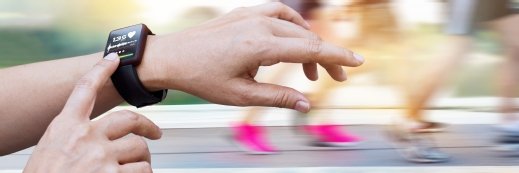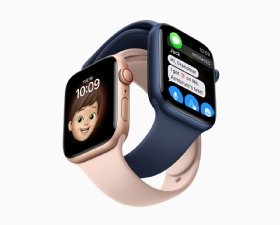
ipopba - stock.adobe.com
Apple Watch effective at assessing heart health
An at-home walking test with the Apple Watch yielded 'accurate and meaningful insights' into a person's heart strength, a Stanford University study found.
Researchers found that the Apple Watch can provide data to determine a person's heart health, making the device useful for at-home monitoring.
A Stanford University study showed that a patient with cardiovascular disease could use an Apple Watch to take a standard six-minute walking test at home. A person with a weak heart is unable to walk more than 1,000 feet in six minutes without resting.
The Apple Watch data yielded "clinically accurate and meaningful insights" about patients' heart health, which allowed for safe monitoring of their progress, the study said.
The researchers found that along with the convenience, low cost and improved data quality of remote monitoring, there was an added benefit of not having to see a doctor in person during the COVID-19 pandemic.
The study, published last week, looked at 110 participants scheduled for vascular or cardiac procedures. Researchers supplied each with an iPhone and an Apple Watch running a unique app that scientists followed for six months.
The participants underwent weekly six-minute walks at home and supervised walks at scheduled intervals in a clinic. The data showed that the Apple Watch was 90% accurate in finding a weak heart in a supervised setting. During at-home testing, it was 83% accurate.
On top of the regularly scheduled home tests, the researchers collected data on other patient activity, such as step counts. They found the supplemental data another good way to predict frailty.

The increasing prevalence of smartphones, even among the elderly population, creates an opportunity to collect data on everyday activities, the researchers said.
But Forrester analyst Julie Ask said insurance companies or governments would have to purchase Apple Watches for people too poor to buy them themselves.
Today, 10% of U.S. consumers have a wearable computing device, and more than half are wealthy athletes, she said. Only 5% of people with wearable devices identify as having a chronic condition, compared to 40% of people in the United States overall
People in rural areas would benefit from having a diagnostic tool because their access to hospitals might be limited.
"We're reaching affluent individuals [who live in cities]," Ask said. The healthcare system is not reaching the person "that has difficulty getting access to care and can't afford the care and can't afford the device."
Maxim Tamarov is a news writer covering mobile and end-user computing. He previously wrote for The Daily News in Jacksonville, N.C., and the Sun Transcript in Winthrop, Mass. He graduated from Northeastern University with a degree in journalism. He can be found on Twitter at @MaximTamarov.







